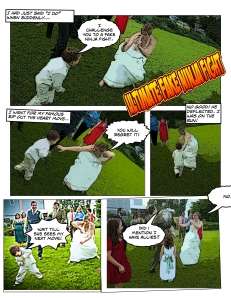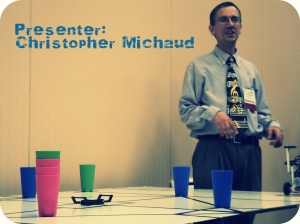I haven’t written in months. I got busy. I got wimpy. I just stopped.
Part of the pause in writing was motivated by an all school assembly that discouraged staff from blogging about anything school related. I don’t think that conversation was directed at me or my blog, but I subconsciously took it in and the next thing I knew months had passed without writing.
So much has happened between then and now, which is another reason I think I got stuck. I felt like I was supposed to catch up, and the problem with thinking that way is that it made coming back to the blog too daunting and overwhelming of a task. So I kept putting it off. I knew I just needed to write. Anything. But I was stuck.
Then, something finally happened to get me to sit down and write again. It’s nothing amazing. Sharing it won’t close any opportunity gaps or raise any AYPs, but it may someday prevent another teacher from a bad day battling the classroom blues, and so it seems as perfect a reason as any to get out of my writing funk. So here goes…
The boys robotics team showed up to the last meeting of the season and right away two of the remaining five team members announced that they would not be able to come to the event on Saturday. (This is the event that they have known about since September. The one that their parents signed forms for agreeing to make sure their children would attend. The one that for which we have literally been preparing for about for 5 months.) On top of that news, a few of the boys showed up in complete “baggage-heavy” mode with sad faces and slumped shoulders totally unable to “leave it at the door”. It was just one of those teacher moments when you are tired and defeated and you feel like no matter what you do it will never be enough. You know? It was too much for me and too much for them. We all just looked at each other… deflated.
I then wasted a good five minutes on“blah blah blah responsibility blah teamwork blah” which I’m sure sounded alot like “Wahwahwahwahwahwahwah” and as I was talking I was reading the pained expressions on their faces and imagining their inner voices screaming “I wish she’d shut up.” “She doesn’t get it” “La la la… I’m not listening…I’m not listening”…
And then I remembered. “Wait. I know better. I’m just letting fatigue get to me. I know that lectures about teamwork and impassioned discussions with students about responsibility in the hallway won’t really help them get any work done. Talks won’t make the kids suddenly able to come to the event or magically induce a focused work trance. They won’t make the problems that low-income school students bring in the classroom suddenly disappear. They just makes everyone unhappy and tired in the moment and who can work where unhappiness abounds, and don’t frustration and unhappiness work perfectly as another excuse not to get any work done?
And so, in a moment of desperate inspiration, I called the boys into a circle at the front of the room and I challenged them to…
A fake ninja fight.
Yep. That’s what I did. The rules were simple. No touching anyone. You just had to amaze the team with a devastating ninja move which would ideally be accompanied by some kind of brain-breaking noise that would fill the rest of us with terror and perhaps make us kneel in awe to the mighty-ness of your ninja power.
I thought for sure this plan would backfire, the problems and frustration were too big for a silly fake ninja fight. The students’ resolve to communicate their sorrow and frustration on this particular day would surely win this round… but then, one of them stepped forward and tore into our souls with some mighty ninja fury. AND. Inspired by his courage, I demonstrated my fiercest move… “the tear-the- heart-out-take-a-taste-spit-it-out-on-the-floor-and-squish-it” move. AND SO. The next boy hurled a ninja throwing star directly at me which sent me sailing to the floor clutching the point of entry in my wounded chest. KABLAM. Which was followed by another student’s best slow-motion spin kick with accompanying slow-mo audio “Hiiiiiiiii—-yaaaaaaaaaahhhhh”.
And then we were laughing.
And then we were working.
I don’t know what inspired this particular course of action in this particular moment of my teaching career. It wasn’t in any lesson plan and I’d never done it before with students. I do sometimes make my husband laugh with my super stylin’ ninja moves when I need to express my frustration at the world, and I did fight my three-year-old “nephew” from Uruguay in a fake ninja fight at my wedding…
But I don’t know why today I decided this was something to do in a classroom in front of human beings that function outside my normal circle of weirdos and family. All I know, if you don’t mind my saying so… is that it was kind of a genius move on my part. It fixed everything, well… at least long enough for the boys to get some work done.
I know. It didn’t solve their larger life problems. It didn’t solve mine either. But it helped us to stop, to breathe, to play, to connect, to reset and blow off some steam and then, to get back to the work we needed to get done.
It felt great to let the boys be boys for a moment and I think they enjoyed and needed the opportunity to do so.
If you have the right classroom environment and the right group of kids (because we all know fake ninja fights might not be the best plan in every classroom), give it a try sometime. You can borrow my secret move if you want. Just remember. The key to making it especially awesome is the part where you taste the heart, right before throwing it to the ground and squishing it.
😉















